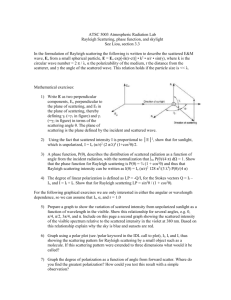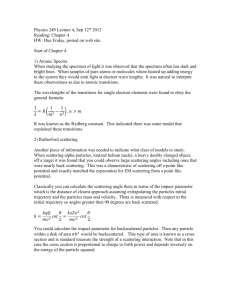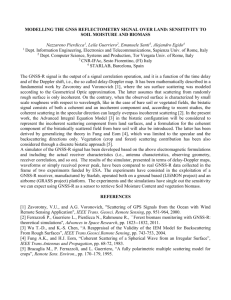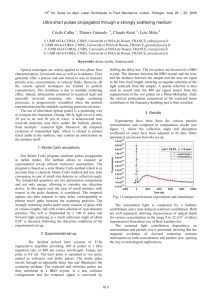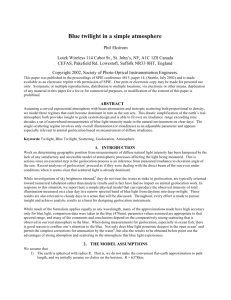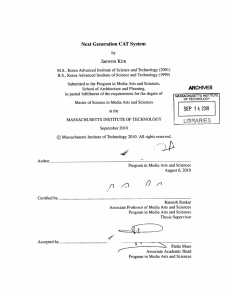Scattering of light
advertisement
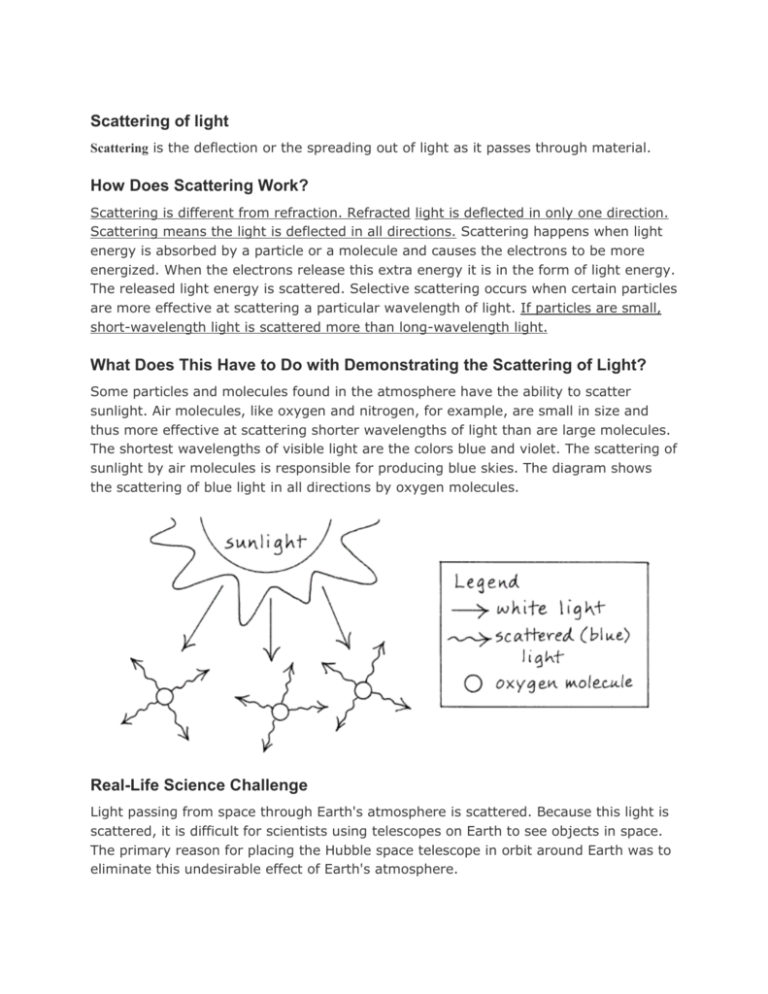
Scattering of light Scattering is the deflection or the spreading out of light as it passes through material. How Does Scattering Work? Scattering is different from refraction. Refracted light is deflected in only one direction. Scattering means the light is deflected in all directions. Scattering happens when light energy is absorbed by a particle or a molecule and causes the electrons to be more energized. When the electrons release this extra energy it is in the form of light energy. The released light energy is scattered. Selective scattering occurs when certain particles are more effective at scattering a particular wavelength of light. If particles are small, short-wavelength light is scattered more than long-wavelength light. What Does This Have to Do with Demonstrating the Scattering of Light? Some particles and molecules found in the atmosphere have the ability to scatter sunlight. Air molecules, like oxygen and nitrogen, for example, are small in size and thus more effective at scattering shorter wavelengths of light than are large molecules. The shortest wavelengths of visible light are the colors blue and violet. The scattering of sunlight by air molecules is responsible for producing blue skies. The diagram shows the scattering of blue light in all directions by oxygen molecules. Real-Life Science Challenge Light passing from space through Earth's atmosphere is scattered. Because this light is scattered, it is difficult for scientists using telescopes on Earth to see objects in space. The primary reason for placing the Hubble space telescope in orbit around Earth was to eliminate this undesirable effect of Earth's atmosphere. Experiment-Tyndall effect Now, start experimenting with light scattering. Darken the room. Arrange the projector, beaker and screen so that one beam of light shines through the solution in the beaker and onto the screen and the other shines directly onto the screen. Add hydrochloric acid to the thiosulphate solution and stir thoroughly. After about a minute, the solution becomes visibly cloudy and a cone of blue scattered light (the Tyndall cone) becomes visible in the beaker. The transmitted light begins to show on the screen as red. This fades gradually as more sulphur is produced and virtually no light is visible after about five minutes. More concentrated acid will produce the same changes more quickly. After the experiment, filter the remaining cloudy liquid in a fume cupboard(because of the sulphur dioxide which is dissolved in the solution) to show that the filtrate is still cloudy and that the sulphur is colloidal. Visual tips:The screen will probably need to be angled towards the audience . so that both the transmitted light and the Tyndall cone can be seen. Fun Fact Over the ocean, the scattering of light by salt particles suspended in the air causes brilliant red sunsets. The color is most intense when the sun is closest to the ocean surface because the light passes through more air, and more of the shorter wavelengths are scattered. Red has the longest wavelength so it is not scattered, and more of the red light reaches your eye. ________________________________________




